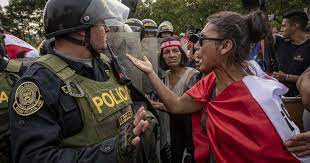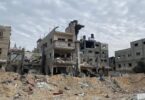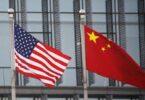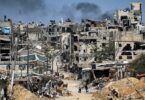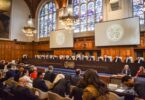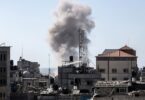José Carlos Agüero
Ever since Peruvian President Pedro Castillo’s failed power grab exactly three months ago, protests have been roiling the country almost every single day. The international press has had a difficult time grasping what has really been happening here. Was it the work of Castillo supporters? Impoverished people from rural areas demanding social rights?
The international press was not alone. Peru’s new president, Dina Boluarte, herself did not understand the motives behind the protests against her. “Protesting why? It’s unclear what they ask for,” she said. To Boluarte, it would be easy if they asked for water, work, roads, hospitals. Instead they seemed to have a political agenda? For her, there was only one possible explanation: it was the work of malign hidden forces – national, or even foreign. There was, however, no mystery at all. The unrest was not a simple factional struggle, nor accumulations of long-repressed social demands; it was the expression of deep political frustration and fatigue with an entrenched and rotten political system. Protesters were demanding the end of a discredited government in both the executive and legislative branches.
No resolution seems in sight. But it’s a crisis worth studying closely by democracies everywhere; it shows just how bad democratic decay can get when politics is contaminated by a dangerous authoritarian ideology. And it shows the determination a people can muster when things have gone too far. Led by the poorest and most marginalized inhabitants of the interior of the country, Peruvian citizens of all walks of life have taken to the streets and are risking their lives for a democracy they see threatened by the very institutions that should embody it. It is a fight for democracy, against a cast of deeply discredited politicians and the ideology and constitutional order that keeps them in power.
Although many factors have contributed to it, the current crisis of Peruvian democracy is the result of more than three decades of entrenchment by a political ideology known as “Fujimorismo.” The movement got its start in 1990, when Alberto Fujimori won the presidential election, defeating the novelist and Nobel laureate Mario Vargas Llosa. Fujimori presented himself as an outsider who was seeking to replace the battered traditional parties during one of the country’s most crisis-ridden historical periods. Peru was fighting the Maoist terrorist group Shining Path even as the country faced bankruptcy. Hyperinflation was ravaging the economy, measuring at 7,482 percent the year Fujimori triumphed.
Fujimori rolled out a package of neoliberal reforms, which included the privatization of companies and public assets, a tightening of monetary policy, a return to an export-led model that concentrated wealth among cartels, and the end of state participation in private activity. At the same time, he doubled down on a counterinsurgency strategy against the Shining Path. In the face of strong political opposition in the legislature, Fujimori dissolved Congress and the judiciary in 1992 and assumed all power with support from the armed forces. To give his self-coup legitimacy, he encouraged the approval of a new constitution in 1993, which further limited the role of the state in the economy and reduced the legislature to a single chamber. Most fatefully for what was to come, he gave both the executive branch and the legislature the power to destroy each other: Congress could now remove the president by a qualified majority vote, and the president could dissolve Congress if it rejects his appointments twice.
The much-touted “economic miracle” brought monetary stability, inflation that has remained below 6 percent since 1999, and an average annual growth of gross domestic product above 4 percent between 1993 and 2020. But it did not eliminate the gray economy (which likely stands at more than 70 percent today). And it has failed to address other lingering grievances. Peru ranks 84th in the world in terms of human development. The top-line growth figures obscure that Fujimorismo left the country in a precarious position – a position that was greatly exacerbated by a catastrophic handling of the covid-19 pandemic. Today, more than half of the population lacks access to enough food, according to figures from the United Nations Food and Agriculture Organization. But it was in politics that Fujimori’s legacy was particularly toxic. He guaranteed impunity for crimes committed by the armed forces. He violated his own constitution by illegally reelecting himself for a second time in 2000. After massive demonstrations against him and the dissemination of videos showing how his government had corrupted officials, businesspeople, military personnel, journalists and opposition members, he resigned but was removed by Congress. He sought refuge in Japan until he was arrested, extradited and tried for crimes against humanity and corruption during a trip to Chile. In 2009, he became the first civilian president in the world to be tried and convicted of human rights violations by a national court and has been in prison since.
But his trial did not bring closure, nor did it set Peru on a better path. Five presidents that followed Fujimori were accused of corruption during or after their term. One was removed from office, one resigned just before Congress could remove him and one died by suicide when the police were about to arrest him. Fujimorismo, the political movement that claims to be the heir of the imprisoned leader, has had a prominent role in these crises. Defeated in 2011 and 2016, Keiko Fujimori, Alberto’s daughter, saw her followers try each time to deny the legitimacy of the elections. When this didn’t work, legislators sought to remove whoever occupied the presidency. In the last decade, Fujimorismo has become some sort of anti-political force that refuses to make compromises in its quest for power. It has come to stand for defending the macroeconomic status quo. It continues to draw its support from parts of society that nostalgically remember the lost authoritarian order.
With social expectations destroyed by this long process of political decay and degradation, none of the 18 candidates in the 2021 presidential election received more than 19 percent of the votes cast in the first round. In the second round, the election was polarized between Castillo, a teacher from the interior of the country who was running from the left, and Keiko Fujimori who had recently been arrested on corruption charges and had promised to release her father if elected. The Fujimoristas proclaimed that their campaign was a crusade to save the republic from “terrorism” and “backwardness,” fueling fear and racism among the middle- and upper-class population – especially in Lima, the capital. The ultraconservative businessman and now mayor of Lima, Rafael López Aliaga, an ally of Keiko Fujimori and admirer of Donald Trump and Jair Bolsonaro, mocked Castillo for his poor oratorical skills – exploiting a racist trope among Lima’s denizens directed at speakers of indigenous languages, for whom Spanish is a second language.
Defeated by only 44,058 votes, the Fujimoristas refused to recognize the results. They attempted to annul the election through legal and disinformation campaigns. They did not succeed in overturning the presidential vote, but they did gain minority control of a Congress fragmented between 13 factions. And they immediately started to scheme to remove Castillo for being unfit for the office – a charge that Castillo was to unfortunately thoroughly confirm during his catastrophic tenure. Plagued by corruption cases involving even members of his family, and with more than 80 different ministers entering and leaving his cabinet in less than two years, Castillo failed to be the left-wing redeemer he had promised to be; he ended up as a traditional Peruvian politician whose only distinction was his social origin, coming from outside of the elite. After two failed attempts to remove him, and as Congress was preparing a third for his ouster, on Dec. 7 of last year, Castillo attempted a self-coup similar to Fujimori’s thirty years earlier. But, without military or economic power to support him, he ended up in prison. He was replaced by his vice president, Dina Boluarte, just a few hours later. It seemed like just another of the many presidential crises that had plagued the country, usually forgotten once a new one took its place.
However, the new president made two decisions that ignited popular outrage. The first was to leave open the possibility of staying in office until 2026, ignoring a growing majority sentiment that was demanding a clean slate – “let them all go.” And the second was her virtual power-sharing pact with Congress, a very unpopular institution in the country, making her the representative of a triumphant Fujimorismo before a disgusted public. Just before the self-coup, Congress had desisted from investigating Boluarte herself for alleged violations to the constitution and tending to particular interests; in turn, Boluarte had declined to join the president’s last cabinet. For many voters, this implicated her in a plot to get rid of Castillo. Then the protests began. In a few weeks, violent strikes and road blockades spread to 18 of the 25 regions in the country, initially calling just for early elections. The government responded with violence. A national state of emergency was declared, curfews were imposed in some cities and the military was sent to assist the police in some areas. Security forces used firearms, heavy vehicles and helicopters. Arbitrary detentions and raids became commonplace. In just 10 days, the police fired nine tons of tear gas grenades, nearly emptying their reserves.
The initial crackdown resulted in at least 49 deaths – 48 civilians and 1 policeman, according to official statistics – and more than 1,800 injuries in less than three months. Hundreds have been arrested. Among the dead, most were young rural workers, seven of them minors. Forensic analyses show that at least in 30 cases, death was caused by impact of firearms projectiles, mostly in the chest or head. On a single day, at least 17 people were killed in the Puno region. Boluarte declared that this police work was “immaculate.”
The state’s violence galvanized a much broader swath of protesters. Scores of people from all over the country, especially from southern Andean, Quechua and Aymara regions, came to the capital, for them the symbol of centralism and abuse of power. Thousands of people traveled from their towns in Puno, Cusco, Ayacucho, Apurímac or Madre de Dios – some more than 20 hours by bus – to participate in the “battle for Lima.” To this day, many are still there. They are demanding the resignation of the president, early elections, the closure of Congress and perhaps even the end of Fujimori’s constitution. Boluarte has labeled these protests as vandalistic and terrorist but has largely failed in her campaign to demonize them. By the end of January, at least 60 percent of the national population considered the protests justified, and support for constitutional reform increased from 47 percent in May 2022 to almost 70 percent today.
Possibly motivated by this collapse in domestic support and international criticism, or by an instinct for self-preservation, Boluarte made a U-turn and demanded that Congress approve early elections to be held this year. Congress rejected the proposal and did not make any decision about the advancement of elections. Boluarte has pointed out that she can’t do anything more. Many Peruvians interpret this as a game intended for neither to leave. The country is currently at an impasse. But regardless of its final outcome, the crisis is likely to end up becoming a pivotal moment in the reimagining of Peruvian citizenship, and Peruvian democracy.
In Peru, there are people aged 70 or 80, who have lived their entire lives under the quasi-feudal servitude of large estates, or gamonales. Not being able to read, they were denied the right to vote until 1980. They have faced violence and repression when fighting for land rights. They have survived hyperinflation, a cholera epidemic, terrorism, dictatorship, racism, hunger, at least two transitions to democracy, a poorly handled pandemic that killed about 220,000 people. (Peru had the highest covid mortality rate in the world.) Add on top of that a nearly permanent political crisis, with six presidents cycling through in the past six years. These people are from the regions with the highest poverty levels. But more importantly, they are from the regions where Fujimoristas attempted to annul votes after the Castillo election. The protesters who are marching on the streets represent a return of politics as a positive force in public life – a movement to reform a society that has for far too long excluded them as second-class citizens. As a woman said during a protest: “We might be cholos [mestizos, descendants of indigenous population], we might be ignorant, they will say we don’t have capacity, but my vote counts the same.” They, more than anyone, are fighting to retain the last shred of democracy they still have left.
The Washington Post

